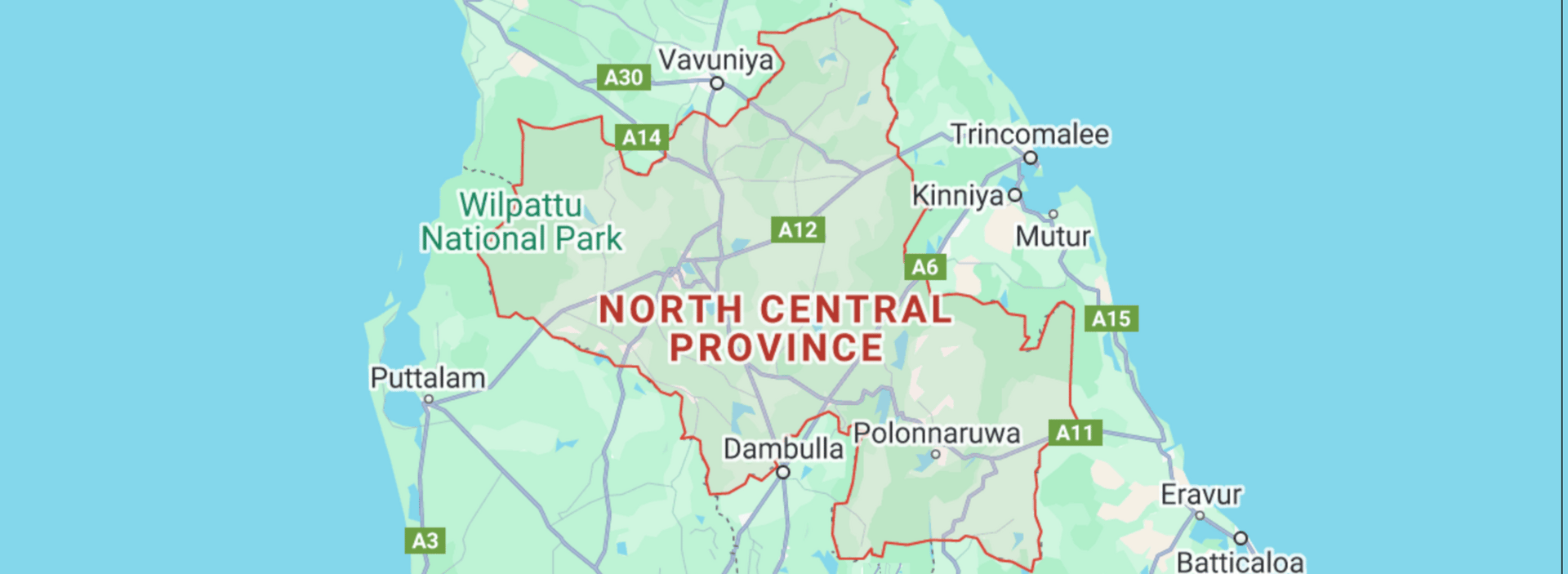
North Central Province
A Journey Through Sri Lanka’s Glorious Past
The North Central Province (NCP) of Sri Lanka is a land where history whispers from every crumbling stupa, where ancient reservoirs still quench the thirst of farmlands, and where sacred Bodhi trees have stood for millennia. As the largest province in Sri Lanka (10,714 km²), it encompasses the districts of Anuradhapura and Polonnaruwa two UNESCO World Heritage Sites that were once the beating heart of the island’s golden age.
This region, often called "Wew Bendi Rajje" (Land of Tanks and Canals), is a testament to Sri Lanka’s ancient hydraulic civilization, where 3,000+ man-made reservoirs still irrigate fields today. With a population of 1.3 million, it remains one of the least densely populated yet culturally richest provinces in the country.
Why Visit the North Central Province?
1. Anuradhapura: The Sacred Ancient Capital
Founded in 4th century BCE, Anuradhapura was Sri Lanka’s capital for over 1,300 years and remains one of the oldest continuously inhabited cities in the world 111. Key highlights include:
Sri Maha Bodhi: The oldest documented tree on Earth, grown from a sapling of the Buddha’s enlightenment tree.
Ruwanweliseya: A colossal white stupa built by King Dutugemunu, symbolizing Buddhist devotion.
Abhayagiri & Jetavanaramaya: Once among the tallest brick structures in the ancient world, rivaling Egypt’s pyramids.
Isurumuniya & Mihintale: Rock temples where Buddhism was first introduced to Sri Lanka in 247 BCE.
2. Polonnaruwa: The Medieval Masterpiece
After Anuradhapura’s fall, Polonnaruwa rose as the second great kingdom (11th–13th century CE). Its Golden Age under King Parakramabahu I saw revolutionary irrigation systems, including the Parakrama Samudra (Sea of Parakrama), a 5,940-acre reservoir still in use 116. Must-see sites:
Gal Viharaya: Four exquisitely carved Buddha statues in a single granite rock face 1.
Lankatilaka Temple: A towering brick shrine with frescoes and a 41-foot Buddha statue 16.
Royal Palace Complex: The 1,000-room palace of Parakramabahu, showcasing Sinhalese engineering 1.
3. Sigiriya: The Lion Rock Fortress
Though technically in the Central Province, Sigiriya is the crown jewel of the Cultural Triangle. This 5th-century sky palace, built by King Kashyapa, features:
Frescoes of the "Sigiriya Maidens": Ancient erotic art painted on a sheer rock face.
Mirror Wall & Lion’s Paw Gateway: A 1,200-step climb leads to panoramic views.
Landscaped Gardens: The world’s oldest surviving water gardens.
4. Wildlife & Nature
Minneriya & Kaudulla National Parks: Witness "The Gathering", where 300+ elephants congregate at reservoirs (July–Oct).
Ritigala Forest Monastery: A mystical jungle-clad mountain with ruins of an ascetic Buddhist retreat.
Aukana Buddha: A 40-foot granite statue carved in the 5th century, perfectly aligned to catch dawn’s first light.
Cultural & Spiritual Significance
Buddhist Pilgrimage: Anuradhapura and Mihintale are sacred sites for Theravada Buddhists.
Ancient Hydraulic Engineering: The province’s tank cascade system is a marvel of sustainable agriculture.
Local Life: 65% of residents rely on paddy farming, preserving traditions unchanged for centuries.
Best Time to Visit
Dry Season (May–Sept): Ideal for wildlife safaris and exploring ruins without extreme heat.
Festivals:
Poson Poya (June): Commemorates Buddhism’s arrival at Mihintale.
Kataragama Esala (July/Aug): Fire-walking rituals near Tissamaharama.
How to Explore?
By Bike: Rent bicycles in Polonnaruwa or Anuradhapura to roam the flat, ruin-dotted landscapes.
Safari Jeeps: Book tours for elephant sightings in Minneriya/Kaudulla.
Train/Bus: Colombo to Anuradhapura (4–5 hrs) or Polonnaruwa (6 hrs) via scenic routes.
The North Central Province is not just a relic of the past—it’s a living museum where ancient reservoirs still nourish fields, where pilgrims chant under Bodhi trees, and where leopards prowl near crumbling stupas. For history buffs, spiritual seekers, and wildlife lovers, this is Sri Lanka’s timeless heart.



